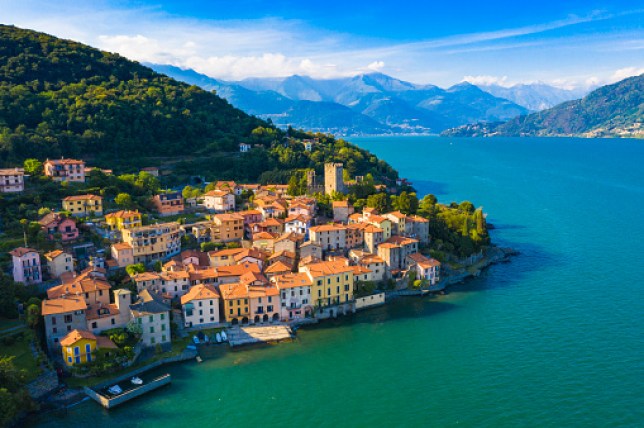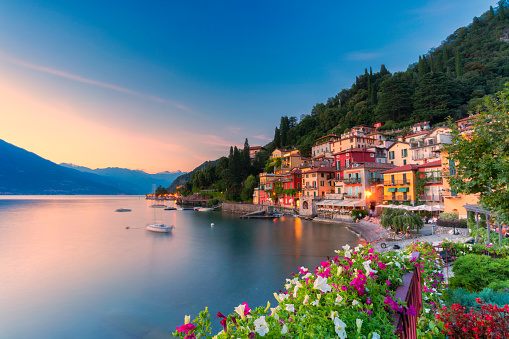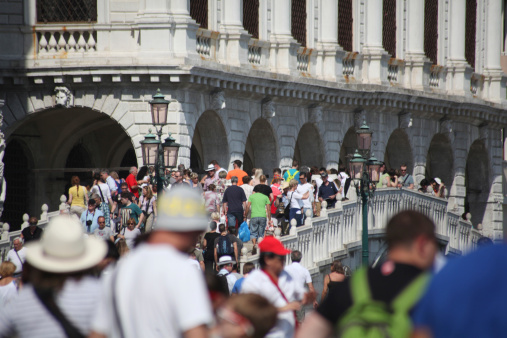The gorgeous Italian locale of Lake Como is planning to follow in the footsteps of Venice by introducing a tourist tax.
The travel hotspot, located in Lombardo, northern Italy, attracts around 1.4 million visitors a year. It was used as a glamorous backdrop in Lady Gaga’s film House of Gucci, and the James Bond flick Casino Royale.
Alessandro Rapinese, mayor of Como city, said the idea of a tourist tax – an extra charge for visitors to wander around the area – is under consideration.
‘We are already discussing the idea [of a tourist tax]. Revolutions begin with concrete measures and we are ready for this long journey,’ Alessandro told The Times.
He added: ‘[It’s] difficult to be mayor when you are fighting tourism.’
Alessandro’s model will likely be similar to the new tourist tax in Venice. It would apply to people who only visit for the city for the day, and might only be levied during public holidays and weekends.
What are tourist taxes and why are they being introduced?
You’re already forking out for your foreign holiday, so a tourist tax might seem unfair – but your money does go to a good cause and travel experts do believe the move is more than justified.
‘The tourism industry does have a responsibility to support destinations and their residents, as well as tourists,’ Laura Evans-Fisk, head of digital engagement at eurochange tells Metro.co.uk.
‘Ultimately, people visit Lake Como for its astounding beauty and amazing food, and there is a level of expectation that it will be a clean, safe place. There is naturally a cost for the upkeep of this.
‘Whilst tourist taxes are a bugbear for visitors, revenues from tourist tax do go towards supporting investment for tourist infrastructure, and the myriad of improvements that make a destination more attractive.’
Put simply, tourist taxes will make your travelling experiences better in the long run and ensure these areas remain great places to visit.
It is currently unclear how much Lake Como’s tourist tax will be if the mayor gets his way and the fee is introduced.
What’s the difference between tourist tax and city tax?
While city taxes are also sometimes referred to as ‘tourist taxes’ because they’re for… well, tourists, there is a key difference.
City taxes are for those staying in a hotel, B&B, vacation rental or hostel. They vary in price depending on the location and the type of accommodation and are usually paid upon check-out.
Tourist taxes, meanwhile, are entrance fees that were originally designed to prevent overcrowding and generate revenue for upkeep and maintenance.
Although Venice, Bali and now Lake Como have made headlines recently for their newly-introduced or proposed tourist taxes, they aren’t a new thing. Bhutan has been charging tourists entry fees since 1974 – and pretty hefty ones at that. It was only in 2022, amid the pandemic, that entrance fees were halved from $200 (around £160) to $100 (around £80).
Why is Venice introducing a tourist tax?
To say that Venice is popular is a huge understatement. It’s estimated that about 30 million tourists walk through the narrow streets of the sinking city each year. Most of these people are day-trippers; only around 3.2 million people stayed overnight in 2022, far higher than the estimated 50,000 residents that call the area home.
The Venice Access Fee is a pay-to-enter charge specifically aimed at day visitors, following years of debates around the topic of overtourism.
From April 25, tourists planning to touch down for the day will have to pay €5 (£4.30). Residents, commuters, students and children under 14 will be exempt, as will tourists staying overnight.
The tourist fee will be tested on select dates throughout May, June and July.
What else is Venice doing to tackle overtourism?
Venice City Council has also confirmed plans to limit the number of groups that can travel to the city.
Beginning on June 1, guided groups travelling to the UNESCO world heritage site, as well as the equally tempting islands of Burano and Torcello, will be limited to a maximum of 25 people. This is approximately half the capacity of a standard tour bus – which can usually accommodate 50 passengers.
The rule aims to cut down pedestrian traffic in immensely popular areas such as Piazza San Marco and Murano’s Via del Giudecca.
The Countries charging tourists to visit landmarks
Earlier this year it was confirmed that Mount Fuji in Japan is the latest major attraction to charge tourists to visit.
The impressive mountain – which is an active volcano and the highest peak in Japan – attracts thousands of climbers every year. In 2023, 221,322 people made the ascent.
Concerns over rubbish and the safety of hikers has prompted Japanese authorities to impose the new tax – the price of which is yet to be announced.
Lots of in-demand destinations in Europe are implementing levies for tourists just like Venice. Less than a three-hour flight from London, the stunning beaches of the Algarve in Portugal is planning to follow suit. The Algarve is introducing a tourist tax which could ‘raise millions’ for the area, at the expense of holidaymakers’ budget trips.
If you’re visiting the southern Portuguese region, you’ll have to cough up £1.70 per person, per night, for up to a week between the months of March and September.
Do you have a story to share?
Get in touch by emailing MetroLifestyleTeam@Metro.co.uk.
Get need-to-know travel news, inspiration and advice from Metro every week.
Sign up here…
This site is protected by reCAPTCHA and the Google Privacy Policy and Terms of Service apply.


















